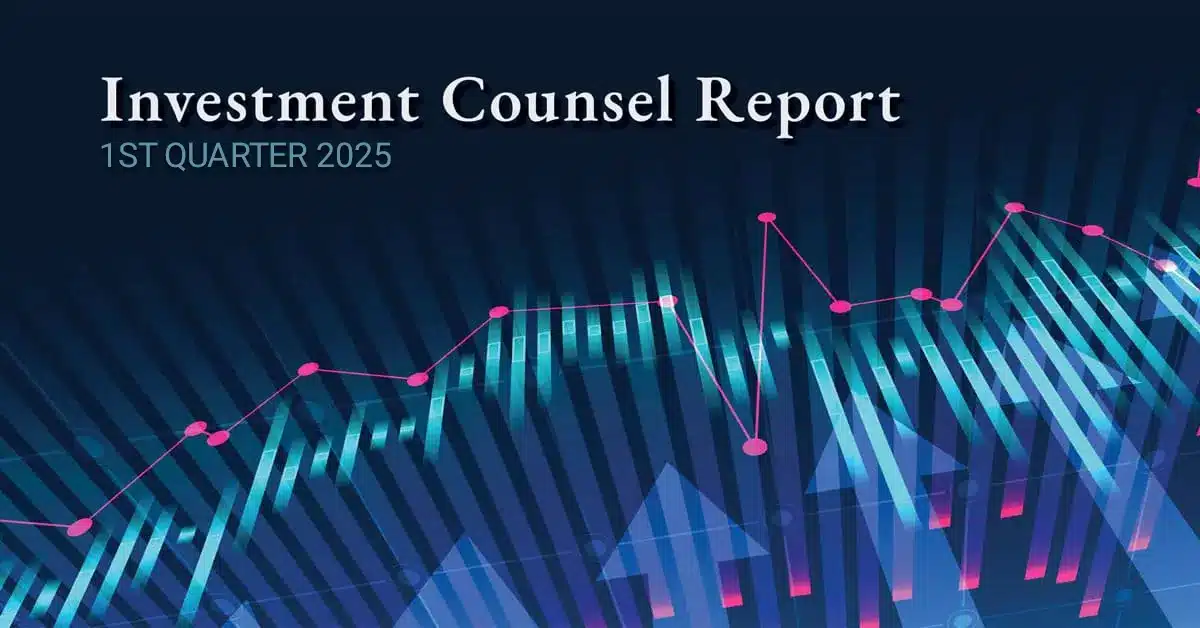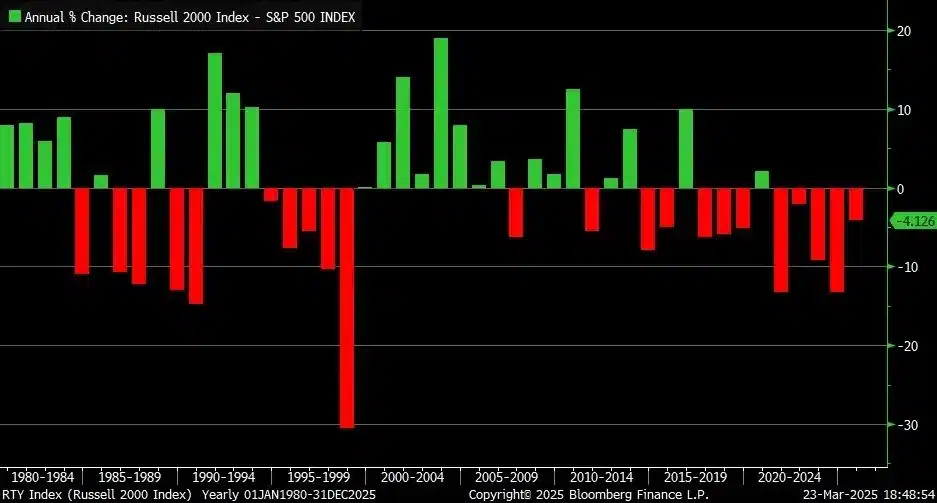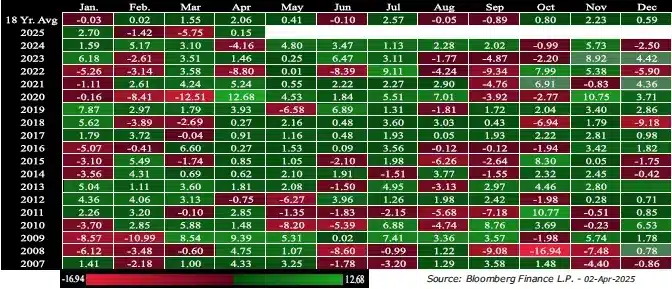Despite ongoing geopolitical uncertainty and concerns over trade tariffs, broad market averages moved higher over the past three months.

Market Summary
The US stock market began the year 2025 precariously – with high volatility and ultimately negative returns forthe first three months. While new government agendas and fiscal policies are being unrolled and the economy at large adjusts, there was not much change in corporate earnings reports as yet. Investor sentiment appears to be the biggest variable of all, and that has dominated recent stock market performance of late.
The large stocks of the S&P 500 Index fell -4.3% for the first quarter of this year, reversing an outsized positive performance of last year. The concentrated positions in AI-related and other technology stocks worked against the S&P 500, as sentiment and expectations shifted. Cycles and reversals of this type are normal – more on this below.
Small stocks of the Russell 2000 Index fell more dramatically, finishing the quarter with a -9.5% loss. While having trailed larger stocks for some time now, the negative performance of small stocks seemed less a result of a change in investor sentiment, but due to concerns for economic recession. While small stocks are typically US-focused in their fundamentals (and thus less impacted by tariffs and geo-political issues), uncertainty over the near term US economy led to the declines.
Finally, international stocks represented by the EAFE Index gained +7.0%. This positive result was welcomed by US investors who have been maintaining a diversified exposure. While underperformance of foreign stocks has been enduring and painful, the last few months show that these cycles reverse quickly and sharply –
justifying a long term perspective.

Aurora Perspective
The red bars (note 5 years running through 2025) denote annual periods where the Russell 2000 (smallstocks) have underperformed the S&P 500 Index (large stocks). Green bars indicate the opposite (small beats large). Going back even further in history, this cycle has repeated with regularity, and we believe that the recent 5 year period will revert and correct again.
Another graphic may help illustrate another seasonal pattern that tends to “mean revert” with time. The heatmap below shows the S&P 500 Index performance annually, and by month. Red indicates negative performance, and green shows positive performance.

There are all sorts of patterns that may be conjured from this type of graph. One observation may be howregular and mostly random the short term returns of stocks are. While “normally” within 1-2%, monthly returns between -17% and +12% have been present. It is rare that returns stay consistently green or red for too long, and reversals are the norm. Perhaps the strongest conclusion to take away may be that short term returns are irregular and variable, but the long term returns are quite consistent and positive.
Aurora Outlook
When there are significant changes in sentiment and in macroeconomic policy trends, invariably there is a risein stock market volatility. With the US economy at an inflection point, in combination with the significant changes to trade and tax policies – adding in some rising geopolitical risks – it can be expected to see a more volatile market performance. While much of the broader market had remained at reasonable valuations, some sectors (AI, tech, etc.) have seen historically high premiums on stock prices. In all, the US stock market has been in retreat and there has been a clear change in investor confidence and sentiment.
To the extent that tariffs or other regulatory changes will have an impact on any particular company’s earnings, we have to begin assessing and monitoring earnings results and make adjustments accordingly. While Aurora’s investment process is long term focused, short term news and impacts on reported results can and do cause us to reassess a company’s investment standing. More common however is that concerns are not translated into actual impacts, and changes in sentiments can create lower prices and opportunities in the long run.
Aurora believes that stock prices follow earnings. This is true for individual stocks/companies, and for stock market averages as well. Stock prices follow earnings when observed in short terms, and the correlation also holds over very long periods of time. The fundamental profit growth of companies ultimately is reflected in the stock prices we participate in as investors. Aurora’s Growth At a Reasonable Price (GARP) investment discipline aims to avoid risk by eschewing prices too high above a company’s earnings. By remaining diversified and consistently exposed to growing companies, we believe our clients can grow their portfolios to earn returns commensurate with their long term objectives.
